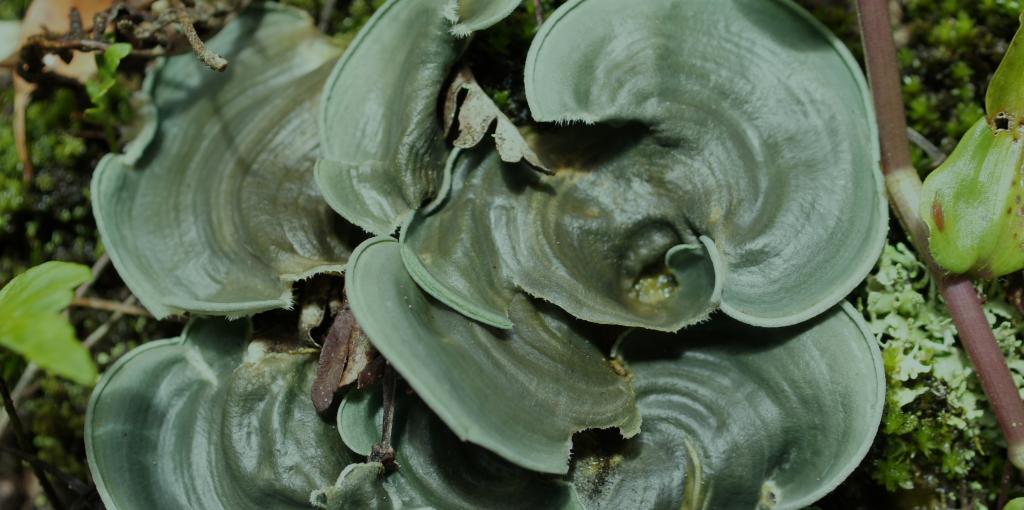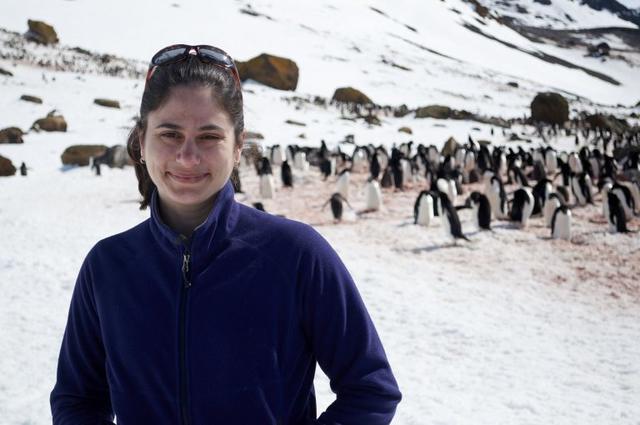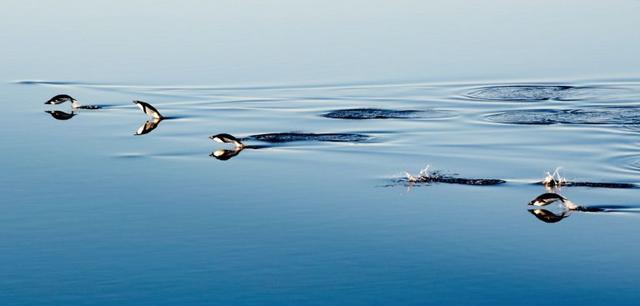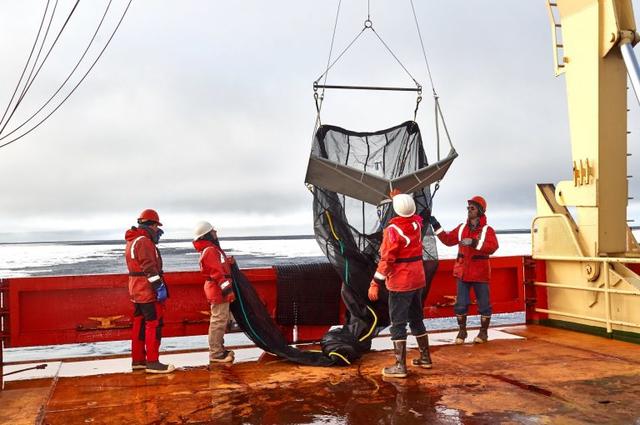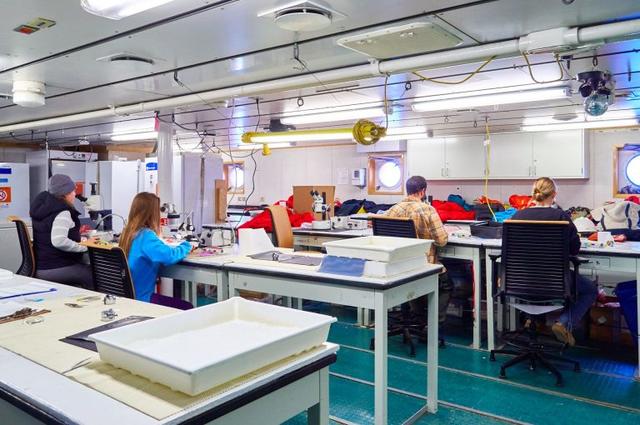Admission CTAs
Designing a new Marine Protected Area in the Western Antarctic Peninsula
Graduate Student Research:
It’s a penguin eat krill world: using dynamic food web modeling to help design a new Antarctic Marine Protected Area
By Adrian Dahood, PhD candidate, Department of Environmental Science and Policy, College of Science, George Mason University.
Affiliation: De Mutsert Fish Ecology Lab
Webpage: http://adrian.fritztech.com
For the last three years, PhD candidate Adrian Dahood who is affiliated with the De Mutsert Fish Ecology Lab has spent the month of August at sea in the freezing Antarctic waters. She set zooplankton nets and identified critters as part of a National Oceanic and Atmospheric Administration Antarctic Marine Living Resources (NOAA-AMLR) project. The NOAA-AMLR team is particularly interested in understanding how one zooplankton species, Antarctic krill, populations change over time. NOAA-AMLR uses these data to help inform management decisions for the krill fishery. Adrian uses the same data to develop dynamic food web models to aid in the design process for a new Antarctic Marine Protected Area (MPA).
Antarctica is so remote that one might question the need to establish an MPA in a place that experiences a relatively low human impact. Well, the Western Antarctic Peninsula (WAP) region where NOAA-AMLR conducts its krill surveys has been significantly impacted by climate change. It is one of the fastest warming regions in the world; the average annual temperature has already increased 7oC since 1950 (Ducklow et al. 2013).
Increased temperatures have led to significant sea ice loss (Ducklow et al. 2013). Antarctic krill, an ice-dependent species, is an important prey item for many species including fish, birds, seals and whales. As the ice retreats, krill lose habitat and the areas accessible to the fishery expand. These pressures on krill could lead to declines in krill and krill predators. Indeed, we have already seen that populations of ice-dependent species that primarily eat krill such as Adélie penguins are in decline, while populations of more flexible species such as Gentoo penguins, are increasing. The Commission for the Conservation of Antarctic Marine Living Resources (CCAMLR), the international body responsible for managing Antarctic marine ecosystems, is in the process of designing and establishing MPAs throughout the Antarctic. CCAMLR recognizes that MPAs can help buffer the ecosystem from the increasing pressure of climate change and facilitate sustainable fisheries.
Traditional methods for designing MPAs rely on static maps of animal distribution and human use patterns. The assumption is that if you protect the areas where animals have been sighted, you will protect the processes that lead to them being sighted there. This may not be a valid assumption for the WAP where both the physical environment and availability of the main prey item, Antarctic krill, are changing rapidly. Adrian’s research uses dynamic food web modeling to help identify areas most important for hungry animals. She employs a wide variety of data including zooplankton data collected on the NOAA-AMLR cruises, penguin and other predator population estimates, and spatial and temporal information about sea ice to build the models. While she spends one month a year in Antarctica counting animals, most of her time is spent searching the literature and speaking with Antarctic ecologists to set parameters in her models. By studying predator prey interactions and how they change over time and space in response retreating sea ice, Adrian hopes to help CCAMLR design an MPA for the WAP that will provide meaningful protection for years to come.
References:
Ducklow, H. W., W. R. Fraser, M. P. Meredith, S. E. Stammerjohn, S. C. Doney, D. G. Martinson, S. F. Sailley, O. M. Schofield, D. K. Steinberg, H. J. Venables, and C. D. Amsler. 2013. West Antarctic Peninsula: An Ice-Dependent Coastal Marine Ecosystem in Transition. Oceanography 26:190-203.
